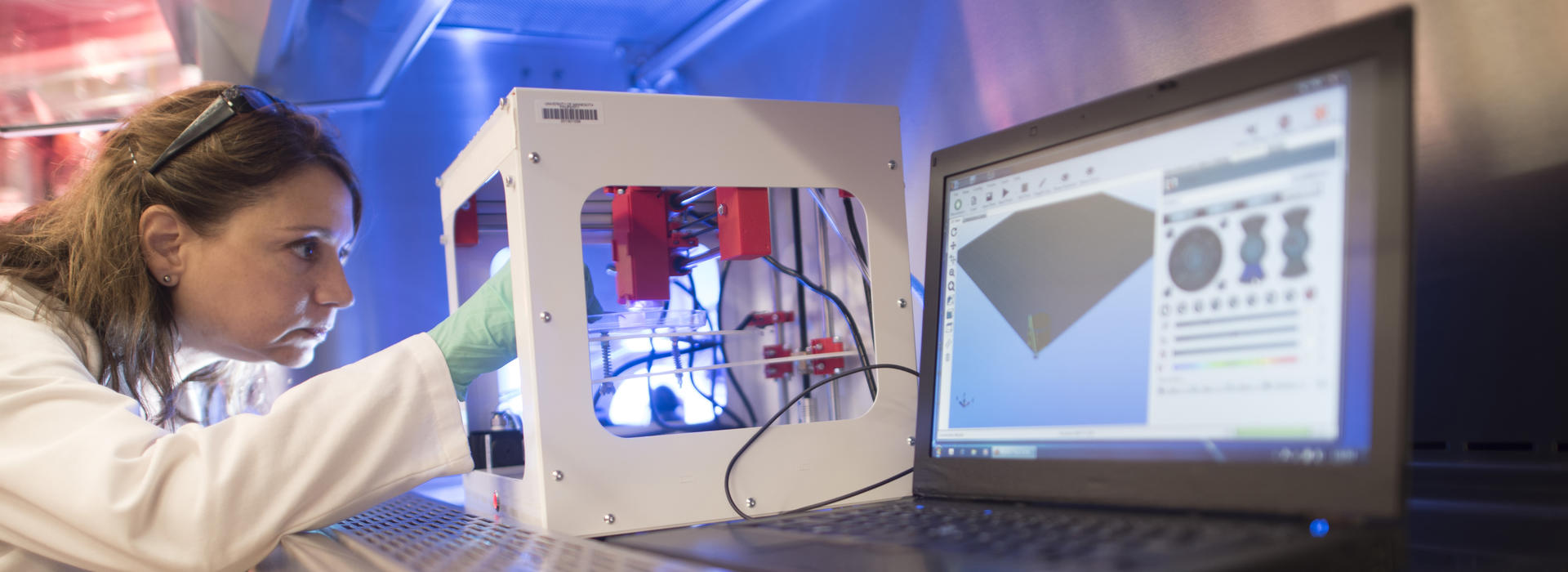
Division of Pediatric Blood and Marrow Transplantation & Cellular Therapy
Angela Panoskaltsis-Mortari, PhD, Professor, Division of Pediatric Blood and Marrow Transplantation & Cellular Therapy
The Division of Pediatric Blood and Marrow Transplantation & Cellular Therapy is dedicated to innovative and exceptional patient care, research and education.
The University of Minnesota is an internationally respected pioneer in the area of Blood and Marrow Transplantation & Cellular Therapy (BMT&CT). The first successful human allogenic bone marrow transplant was performed at the University of Minnesota in 1968. Other “firsts” include the first transplant to treat a patient with lymphoma (1975), the first transplant to treat an inherited metabolic disease (1982), and the world’s first umbilical cord blood transplant performed using pre-implantation genetic testing to ensure a perfect tissue match (2000). Our clinical program is recognized as the second largest unrelated donor transplant program in the country and one of the largest umbilical cord blood transplant centers in the world.
Education & Training
Our division offers a one-year non-accredited fellowship in Pediatric BMT&CT. We also collaborate with the three-year ACGME-accredited Pediatric Hematology-Oncology Fellowship Program at U of M.
Patient Care
For over 50 years, we have demonstrated excellent, expert, and innovative care of our blood and marrow transplant patients. Families come from across the world to receive care from our team.
Research
Our researchers continue to break new ground in the areas of alternative stem cell therapies, cord blood transplantation, genetic engineering to reduce the side effects of BMT&CT, genetic engineering to potentially treat disease, and immune-based therapies.
Contact Us
Appointments: (612) 365‑8100
Provider Referrals: (612) 273-2800
Patient-Related Faxes: (612) 273-0882
Administrative Office
Phone: (612) 626-2961
Fax: (612) 626-4074
Mailing Address
Mayo Mail Code 366
420 Delaware Street SE
Minneapolis, MN 55455
Shipping Address
425 East River Road
Suite 660
Attn: Pediatric BMT & CT
Minneapolis, MN 55455
Note: Before shipping, contact the administrative office to assure that your package is addressed to the correct location
Divisional Spotlight
Our Centers
Epidermolysis Bullosa (EB) Center
The M Health Fairview Masonic Children's Hospital is an international leader in the treatment of epidermolysis bullosa (EB), an often life-threatening skin-blistering disorder.
Leukodystrophy Center
The ALD and Leukodystrophy Center at the University of Minnesota has unsurpassed experience treating leukodystrophy patients. Our physicians lead the field in several areas of research and continue to explore innovative ways to improve treatment success.
Mucopolysaccharidosis (MPS) Center
Our MPS Center is internationally recognized for our expertise, innovative treatment approaches, and research. Patients are cared for by experts in the areas of audiology, blood and marrow transplantation, cardiology, ear, nose and throat, endocrinology, genetics, neurology, neuropsychology, neuroradiology, ophthalmology, orthopeadic surgery, and pulmonology. This multidisciplinary team approach ensures that the care we provide best meets the unique needs of each patient and family.
Our Laboratories
Blazar Laboratory
Immunobiology and transplantation are the main research interest in the Blazar Laboratory. Project areas include: Graft-versus-host disease, regulatory T cells, immune recovery and regeration post-transplant, graft-versus-leukemia and genetic manipulations and reprograming of immature and mature cells.
Bosnakovski Lab
The Bosnakovski lab is focused on tissue regeneration and understanding the molecular and cellular mechanisms of FSHD and sarcomas. The current work includes exploring the molecular and cellular effects of DUX4 expression in skeletal muscle and studying antifibrotic drugs on an FSHD mouse model. The lab is also modeling the initiation of CIC-DUX4 pediatric sarcomas and exploring novel epigenetic-targeted therapies for Ewing sarcomas.
Chan Laboratory
Congenital heart defects and muscular dystrophies are common hereditary diseases affecting children, but effective treatments for most of these disorders are scarce. In the Chan Laboratory, they are working on deciphering the molecular regulation of how these diseases develop and establishing stem cell-based therapies to combat them.
Kyba Laboratory
The Laboratory of Experimental Tissue Regeneration, led by Dr. Michael Kyba, focuses on factors regulating tissue degeneration and regeneration, with a view towards using cell therapy for regenerative therapy.
Panoskaltsis-Mortari Laboratory
The Panoskaltsis-Mortari laboratory is centered on the field of regenerative medicine. We study tissue engineering from stem cells using two approaches:
- Decellularized whole organ scaffolds integrated with sophisticated bioreactors
- 3D Bioprinting using extrusion, suspension, and laser-assisted techniques
Tolar Laboratory
The Tolar Laboratory focuses on finding new ways of treating children with lethal diseases. Additional research areas include:
- Reducing the negative effects of stem cell transplantation
- Creation and use of induced pluripotent stem cells
- Gene therapy using gene addition
- Gene editing